Vietnamese chopsticks, locally referred to as “đũa,” hold tremendous cultural, historical, and practical significance in Vietnam. These slender dining tools are not just functional utensils but also embody the cultural essence, etiquette, and communal spirit of Vietnamese society. The use of chopsticks in Vietnam goes beyond fulfilling a basic need; they represent respect, harmony, and the practice of shared family and communal dining. Whether carved out of bamboo, wood, or more modern materials like stainless steel, each pair of chopsticks a story of its own, deeply ingrained in Vietnamese tradition and daily life.

Moreover, the experience of dining with Vietnamese chopsticks provides an insight into the broader values of Vietnamese culture, where meals are a shared experience and an opportunity to reinforce social bonds and respect. Learning to use chopsticks properly, recognizing their historical roots, and understanding the etiquette surrounding their use elevates the dining experience, making it not just a meal, but a cultural experience. Through this article, we will explore the multifaceted aspects of Vietnamese chopsticks, diving deep into their cultural significance, types, materials, usage techniques, and their environmental impact.
Cultural Significance of Vietnamese Chopsticks
Vietnamese chopsticks are not just everyday eating utensils; they hold symbolic meanings and are deeply embedded in Vietnam’s cultural fabric. These slim tools serve as metaphors for various cultural values like balance, harmony, and unity within the family and society. Their role extends beyond mere functionality to encapsulate deep-rooted traditions and societal norms. The dynamic way chopsticks are used in meals exemplifies the interconnectedness of Vietnamese cultural values, illustrating how every element contributes to a harmonious whole. When observed closely, chopsticks represent the yin and yang philosophy, necessitating collaboration and balance in every bite.
Role in Vietnamese Dining Traditions
In Vietnamese dining traditions, chopsticks play an integral role far beyond their primary function of facilitating eating. They are a bridge connecting generations, traditions, and social customs. The use of chopsticks is a critical aspect of Vietnamese dining etiquette and an important part of every meal, representing more than just a practical way to consume food. They symbolize respect and familial ties, with their communal usage at the dining table fostering a sense of togetherness and community.
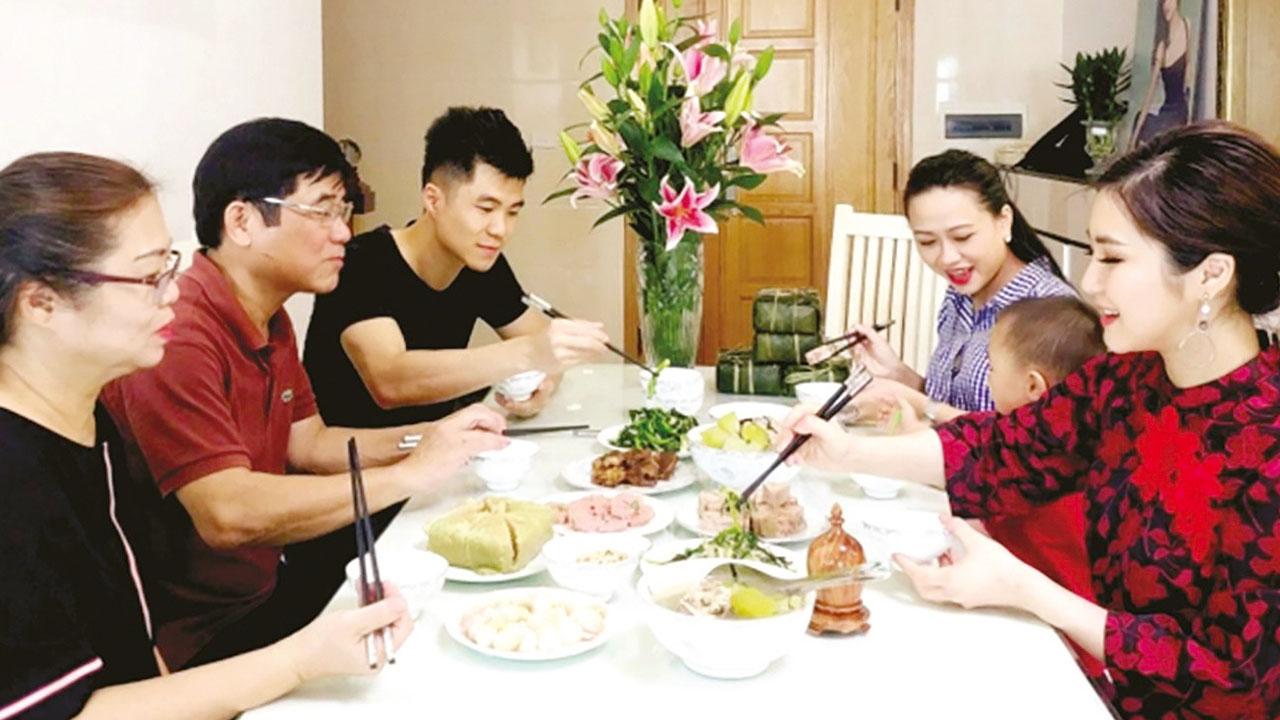
Vietnamese meals are typically served family-style, with multiple dishes placed in the center for everyone to share. Rather than individual portions, communal dishes encourage family members to interact, serve each other, and share everything laid on the table. This practice of sharing symbolizes generosity and the nurturing characteristic of Vietnamese culture. Using chopsticks, one picks up food delicately and conveys it to a personal bowl, signifying carefulness and respect towards the shared meal. This method of dining enhances the communal spirit, promoting empathy and mutual respect.
The influence of Chinese culture on Vietnamese dining traditions is unmistakable, and one clear example is the use of chopsticks. Historically, chopsticks were introduced to Vietnam from China and have since been ingrained into daily culinary practices. These utensils are made using a variety of materials such as bamboo, wood, and metal, each symbolizing different aspects of Vietnamese life. Bamboo chopsticks, for instance, are especially common due to the abundant supply of bamboo in rural areas, representing resilience and sustainability deeply valued in Vietnamese culture.
Celebrations and special rituals also underscore the importance of chopsticks. During Tet, the Vietnamese Lunar New Year, families reunite to enjoy traditional dishes using chopsticks, symbolizing unity and familial ties. Special designs and materials like beautifully carved wooden chopsticks or intricately decorated ones are often used during such festive occasions, reflecting the profound respect for cultural traditions and the joy of togetherness. Thus, Vietnamese chopsticks are emblematic of the cultural values and social practices that make Vietnamese dining traditions unique and deeply communal.
Symbolism and Etiquette
Chopsticks in Vietnam are enveloped in a tapestry of symbolism and etiquette that elevates their role from mere utensils to cultural icons. Understanding the nuances of this symbolism and the correct etiquette associated with using chopsticks is essential for anyone wishing to fully engage with Vietnamese culture.
Symbolically, chopsticks are often associated with the concept of balance and harmony, akin to the yin-yang philosophy. The way they function requiring two chopsticks to work together seamlessly mirrors the importance of balance and cooperation in relationships and society. They also symbolize the harmonious duality present within familial and social structures. Just as one chopstick is useless without the other, individuals in a family or community are seen as interdependent, highlighting the cultural value placed on unity and support.
In terms of etiquette, there are numerous unwritten rules that govern the proper use of chopsticks in Vietnam, each reflecting deep respect for cultural norms and others at the dining table. For example, it is considered highly disrespectful to place chopsticks upright in a bowl of rice, as this closely resembles offerings made at funerals. Such an act is believed to attract bad luck. Instead, chopsticks should always be laid down flat on a tray or crossed on the plate when not in use.
Another significant aspect of chopstick etiquette is the manner of holding and using them. Proper handling of chopsticks is seen as a reflection of one’s upbringing and respect for others. For example, one should never use chopsticks to point at someone or something, as this is seen as extremely rude. Similarly, it is bad manners to jab or stab food with chopsticks, as they are meant for grasping, not stabbing.
Etiquette also extends to the serving of food. When dining in a communal setting, it is customary to use the opposite end of the chopsticks (the end not used for eating) to serve food from a shared dish onto one’s plate. This practice of using the other end signifies cleanliness and respect for communal health standards, preventing the spread of germs.
Thus, Vietnamese chopsticks are not only tools for eating but also instruments rich with cultural symbolism and rules of etiquette that ensure respect, harmony, and community within Vietnamese society. Their use enforces a dining discipline and cultural engagement that enriches the social and familial experience.
Historical Origins and Development
The historical origins and development of chopsticks in Vietnam are deeply intertwined with the broader cultural and historical context of East Asia. The use of chopsticks dates back over 2,000 years, and their journey into Vietnamese culture signifies a blend of influence and adaptation from neighboring China.
Chopsticks are believed to have been invented during the Xia Dynasty (around 2100-1600 BCE) in China. Initially used as cooking utensils, they gradually became essential dining tools. The spread of chopstick use across East Asia, including Vietnam, was facilitated by trade, migration, and cultural exchanges. As Vietnam came under Chinese rule during various periods, notably during the Han Dynasty (206 BCE – 220 CE), the influence of Chinese customs, including chopstick usage, became pronounced in Vietnamese society.
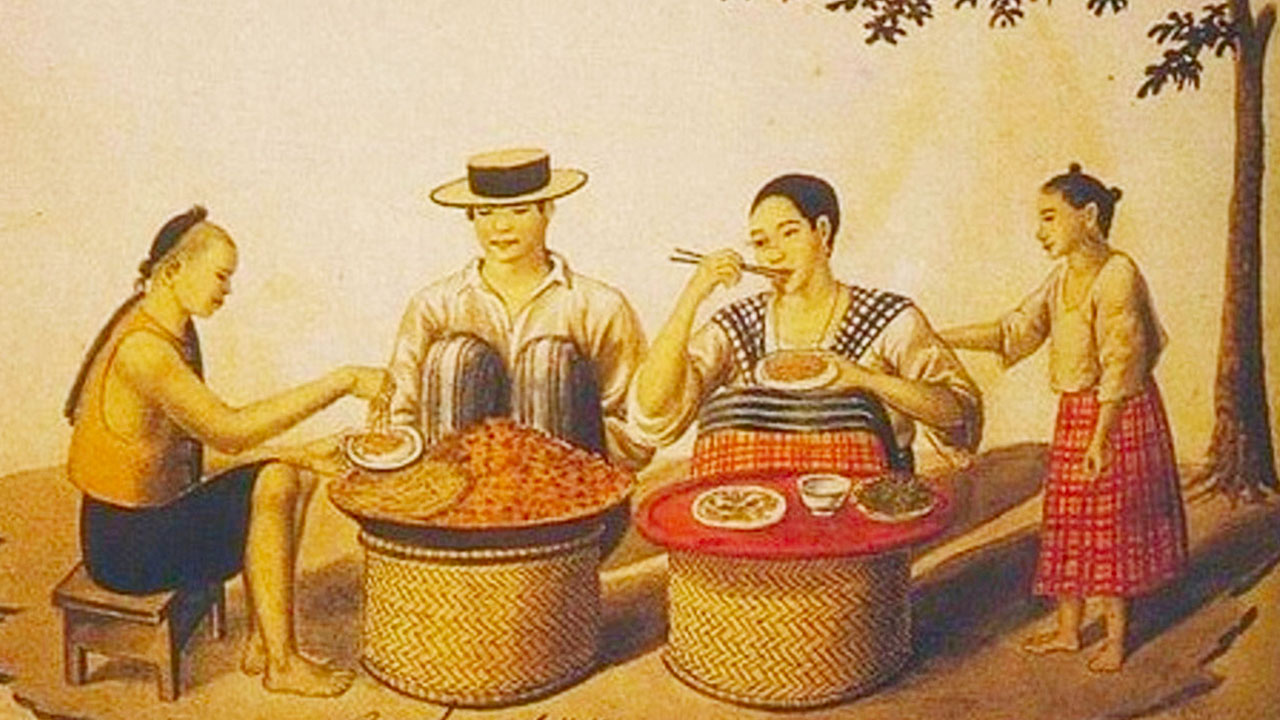
In Vietnam, the indigenous people adopted chopsticks and integrated them into their own cultural and culinary practices. Over centuries, chopsticks evolved in design and material, reflecting the available resources and local customs. Bamboo and wood, abundantly available in the region, became the primary materials for crafting chopsticks in Vietnam. These materials not only provided functional advantages but also resonated with the Vietnamese people’s connection to nature and their agrarian lifestyle.
During ancient times, wooden chopsticks were often reserved for the wealthier families and the elite, while common people used chopsticks made of bamboo. This distinction gradually faded as bamboo chopsticks became prevalent across all social strata due to their practicality and affordability. The craft of making chopsticks also developed into a skill passed down through generations, with each family or village potentially having its own unique style and design.
The historical evolution of chopsticks in Vietnam also reflects the resilience and adaptability of Vietnamese culture. Despite periods of foreign domination, Vietnamese people adapted and assimilated influences, including the use of chopsticks, into their own cultural identity. This adaptability is seen in the diverse designs and materials used in Vietnamese chopsticks, ranging from simple everyday bamboo chopsticks to intricately carved wooden or ornate ceramic versions used during special occasions.
In conclusion, the historical origins and development of chopsticks in Vietnam are a testament to the country’s rich cultural tapestry, influenced by regional interactions and indigenous adaptations. Vietnamese chopsticks, evolving over millennia, reflect a harmonious blend of functionality, cultural symbolism, and historical continuity that highlight their deep-rooted significance in Vietnamese society.
Types of Vietnamese Chopsticks
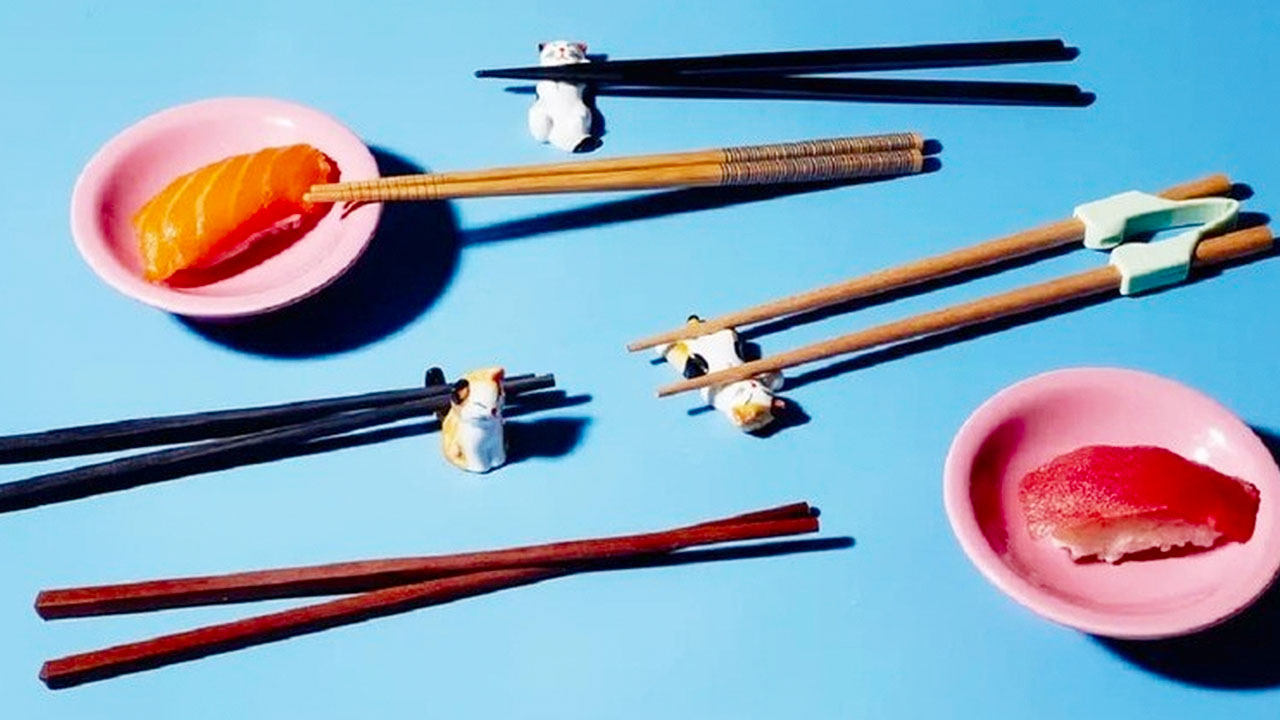
Vietnamese chopsticks come in various types and materials, each reflecting different cultural, practical, and aesthetic considerations. The diversity in material and design not only caters to different dining needs but also embodies cultural values and environmental considerations. Here, we delve into the various types of Vietnamese chopsticks, their materials, and their cultural significance.
- Bamboo Chopsticks: Bamboo chopsticks are the most common and widely used in Vietnam. Known for their lightweight and eco-friendly nature, bamboo chopsticks are often used in households and casual dining settings. They are affordable, making them accessible to a broad segment of the population. Bamboo chopsticks can be either disposable or reusable, with the latter being more environmentally conscious.
- Wooden Chopsticks: Wooden chopsticks are often crafted from hardwood and come in various designs and finishes. These chopsticks are generally more durable than bamboo and are often used in restaurants and during special occasions. Wooden chopsticks are sometimes decorated with intricate carvings or lacquer, making them not only functional utensils but also items of aesthetic value.
- Coconut Chopsticks: Sourced from the coconut tree, particularly in the Mekong Delta region, coconut chopsticks are aesthetically appealing but less durable compared to bamboo or wooden chopsticks. They are often used during special occasions due to their unique appearance and are valued for their connection to local craftsmanship.
- Stainless Steel Chopsticks: Though less common for eating due to their slippery nature, stainless steel chopsticks are sometimes used for their durability and elegance. These chopsticks are more often used in urban settings and are valued for their longevity and ease of cleaning.
Materials Used in Vietnamese Chopsticks
The materials used in making Vietnamese chopsticks vary significantly, each bringing unique properties and cultural connotations.
- Bamboo: Bamboo is the most commonly used material for chopsticks in Vietnam. It is abundant and renewable, making it an environmentally friendly option. Bamboo chopsticks are lightweight, easy to use, and can be produced in both disposable and reusable forms. They are favored for daily use due to their practicality and affordability.
- Wood: Wooden chopsticks are made from various types of hardwood, including rosewood, ebony, and beech. These chopsticks are sturdy and often feature beautiful finishes and carvings. Wood provides a good balance between durability and aesthetic appeal, making wooden chopsticks a popular choice for formal dining settings and gifts.
- Coconut: Coconut chopsticks are crafted from the hard shell and wood of the coconut tree. They have a distinctive look and feel, often featuring natural patterns unique to each piece. While not as durable as bamboo or wood, coconut chopsticks are valued for their artistic quality and are used during special occasions or as decorative items.
- Stainless Steel: Stainless steel chopsticks are durable, hygienic, and resistant to wear and tear. However, their slippery nature can make them challenging to use, especially when handling delicate or slippery foods. They are often chosen for their sleek appearance and longevity, making them suitable for modern, urban dining environments.
Shapes and Designs of Chopsticks
The shape and design of chopsticks in Vietnam can vary, reflecting both functional and cultural preferences. Here are some common shapes and designs:
- Round: Round chopsticks are easy to hold and maneuver, making them a popular choice for everyday use. They are usually tapered towards the ends to allow for precise gripping of food.
- Square or Rectangular: These chopsticks have a flat, four-sided shape that provides a better grip and prevents them from rolling off the table. They are often used in more formal dining settings.
- Tapered: Many Vietnamese chopsticks have a tapered design, where the end that contacts the food is narrower. This design aids in picking up smaller and more delicate foods efficiently.
- Decorated: Chopsticks used during special occasions often feature intricate carvings, lacquer, and other decorative elements. These designs not only enhance their aesthetic value but also reflect cultural motifs and traditions.
How to Use Vietnamese Chopsticks

Using Vietnamese chopsticks proficiently requires an understanding of the correct techniques and the practice of cultural etiquette. Here, we outline the proper holding technique, steps to manipulate chopsticks, and common mistakes to avoid.
Proper Holding Technique
- Initial Positioning: Begin by selecting a pair of chopsticks that are of equal size and shape. Hold one chopstick like a pen, positioning it between your thumb and index finger. This chopstick will remain mostly stationary.
- Hold Second Chopstick: Place the second chopstick between your index and middle fingers, using your thumb to stabilize it. Ensure the tips of both chopsticks are aligned and parallel.
- Control Movement: Use your thumb as a pivot to move the second chopstick. By applying gentle pressure, you can open and close the chopsticks, allowing you to grasp food.
- Practice Pinching Food: Bring the tips of the chopsticks close to the food you wish to pick up. Gently pinch the food, ensuring a relaxed grip to hold it securely without dropping it.
Steps to Manipulate Chopsticks
- Practice With Larger Foods: Start with larger items such as dumplings or vegetables to get comfortable with the chopsticks’ movements.
- Moving to Smaller Foods: Gradually progress to smaller items like grains of rice or peas as your dexterity improves.
- Avoid Stabbing Food: Chopsticks are designed for picking up food, not stabbing it. Always use a gentle pinching motion.
- Maintaining Hygiene and Etiquette: Avoid unnecessary touching of chopsticks to sauces or bowls to maintain hygiene and show respect for the dining experience.
Common Mistakes to Avoid
- Inserting Chopsticks Vertically into Rice: This practice resembles funeral rites and is considered taboo.
- Pointing with Chopsticks: Pointing with chopsticks at someone is impolite; use your hands for gesturing.
- Tapping Chopsticks on Bowls: This action is reminiscent of begging and is seen as disrespectful.
- Skewering Food: Avoid using chopsticks like a fork. Proper handling involves pinching, not stabbing.
- Crossing Chopsticks: Ensure chopsticks are aligned correctly. Misalignment or crossing them can symbolize discord.
Understanding these techniques and avoiding common mistakes can significantly enhance one’s chopstick skills, making dining experiences more enjoyable and culturally respectful.
Etiquette Rules for Using Chopsticks in Vietnam
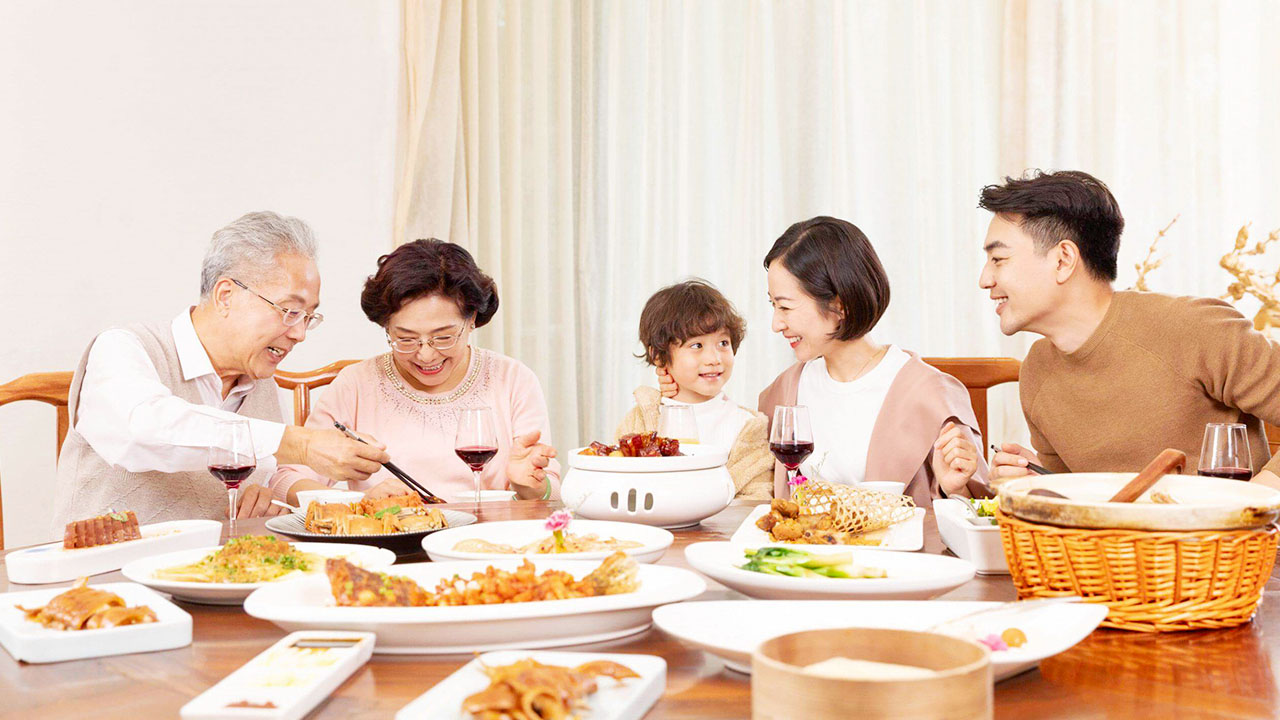
Chopstick etiquette in Vietnam encompasses various dos and don’ts that reflect the country’s emphasis on respect, communal harmony, and cultural values. Here, we outline key etiquette rules that one should observe when using chopsticks in Vietnam.
Dos and Don’ts of Chopstick Usage
Dos
- Hold Properly: Ensure that the chopstick tips are even. Hold one chopstick steady between your thumb and index finger, and the second with your index and middle fingers.
- Use for Serving: When serving yourself from a communal dish, use the opposite end of the chopsticks to avoid contamination.
- Share with Others: Use chopsticks to transfer food from shared plates to your bowl. This shows respect and consideration for others.
- Place Neatly: When not in use, place chopsticks on a holder or beside your bowl, not on your plate or bowl.
- Practice Beforehand: If you’re not used to chopsticks, practice with larger, easier foods first.
Don’ts
- Vertical Placement: Do not place chopsticks upright in a bowl of rice, as this resembles funeral offerings.
- Pointing or Gesturing: Avoid using chopsticks to gesture or point at others.
- Sucking or Playing: Refrain from sucking on chopsticks or making noise with them.
- Mixing Dishes: Avoid stirring through communal dishes to find preferred food; take from the top.
- Touching with Sauce: Do not touch the tips of chopsticks to dipping sauces or stir soup with them.
Cultural Practices When Dining with Others
In Vietnam, dining is a social activity that emphasizes respect and community. Here are key cultural practices related to chopstick use:
- Elders First: Wait for the eldest or most respected person at the table to begin eating before you start.
- Invite Others: Before serving yourself, offer food to elders or honored guests using clean chopsticks.
- Passing Food: Use serving chopsticks or a clean pair to pass food to others, maintaining hygiene and respect.
- Shared Dishes: When taking food from shared dishes, use the opposite end of your chopsticks or serving utensils provided.
By adhering to these etiquette rules, one demonstrates respect for Vietnamese cultural values, enhancing the communal dining experience.
Interactions with Shared Dishes
Interacting with shared dishes in Vietnamese dining involves specific etiquette to ensure a harmonious and respectful meal. Here are detailed guidelines for using chopsticks with shared dishes:
- Serving from Communal Dishes: When serving yourself from a communal dish, use the opposite end of your chopsticks to maintain cleanliness. Alternatively, use serving utensils provided.
- Offering to Elders: Traditionally, it is respectful to offer food to elders or guests before serving yourself. Use clean chopsticks for this gesture.
- Avoiding Pointing and Stabbing: When serving yourself from shared dishes, avoid pointing or stabbing at food. Use chopsticks gently to pick up food pieces.
- No Mixing: Do not rummage through communal dishes to find preferred items. Take food from the top, ensuring minimal disruption.
By following these practices, one can ensure a pleasant and respectful dining experience in line with Vietnamese cultural norms.
Common Dishes That Use Chopsticks
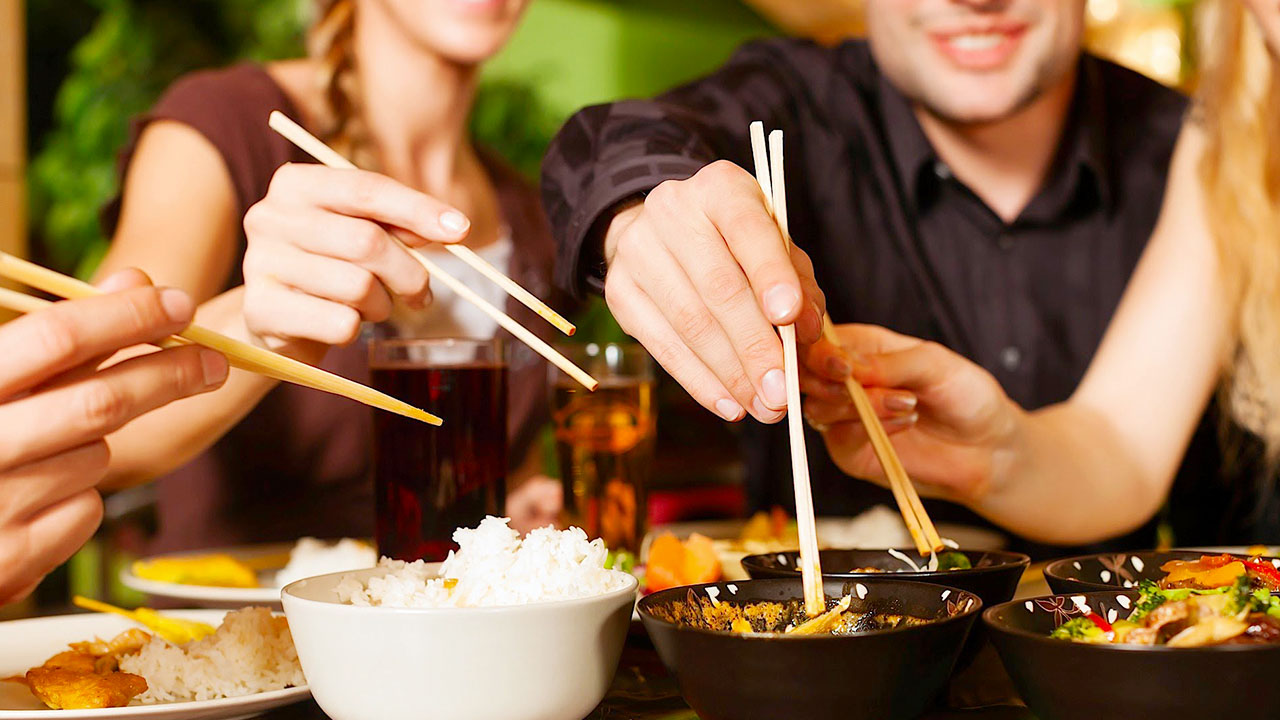
Typical Meals Served with Chopsticks
Vietnamese cuisine offers a variety of dishes commonly enjoyed with chopsticks. Here are some typical meals that highlight the importance of these utensils:
- Phở: A famous Vietnamese noodle soup with broth, rice noodles, herbs, and meat (usually beef or chicken). Chopsticks are essential for handling the slippery noodles and herbs.
- Bánh cuốn: Steamed rice rolls filled with ground meat or mushrooms, served with a dipping sauce. Chopsticks are used to manage the delicate rolls.
- Bún: Rice vermicelli noodles topped with grilled meats or fresh vegetables. Chopsticks are crucial for lifting the thin noodles and ingredients.
- Gỏi cuốn (Spring Rolls): Fresh spring rolls with shrimp, herbs, rice vermicelli, typically dipped in peanut or hoisin sauce. Chopsticks help maneuver these rolls efficiently.
- Cơm: Rice, often served with various side dishes, eaten with chopsticks. Rice is a staple in Vietnamese cuisine, making chopsticks integral during meals.
These dishes illustrate the diverse nature of Vietnamese cuisine and the indispensable role of chopsticks.
Special Occasions and Celebrations
Chopsticks are also used during special occasions and celebrations, highlighting their cultural importance:
- Tết (Lunar New Year): Families gather to enjoy traditional dishes like bánh chưng (sticky rice cakes) using chopsticks. This symbolizes unity and familial ties.
- Mid-Autumn Festival: Mooncakes are shared during this festival, often using chopsticks to cut### Special Occasions and Celebrations
Vietnamese chopsticks are not only essential for daily dining but also play a significant role during special celebrations and ceremonies. These occasions often involve elaborate meals that require the usage of chopsticks, reinforcing traditions and communal ties.
- Tết (Lunar New Year): Tết, or Vietnamese Lunar New Year, is the most significant celebration in Vietnam. Families come together to share lavish meals featuring special dishes like bánh chưng (square sticky rice cakes), thịt kho nước dừa (braised pork with coconut water), and various spring rolls. Chopsticks are indispensable for these meals, symbolizing unity and shared joy. Special chopsticks, often made of wood with intricate designs, may be used during this festive period to honor the occasion.
- Mid-Autumn Festival (Tết Trung Thu): The Mid-Autumn Festival is celebrated with mooncakes, fruits, and other festive foods. While mooncakes are typically enjoyed using hands, chopsticks are used for other shared dishes during family gatherings. The use of chopsticks during this festival emphasizes the importance of family and community.
- Weddings: Vietnamese weddings are grand events that feature multiple courses of traditional cuisine. Dishes often include roasted meats, seafood, and a variety of side dishes. Decorative chopsticks, sometimes given as wedding favors, are used, symbolizing the couple’s new life together and the joining of their families. The shared use of chopsticks at the wedding feast symbolizes harmony and togetherness.
- Ancestor Worship and Commemoration: During ceremonies to honor ancestors, such as death anniversaries or during Tết, special meals are prepared and offered at altars. Chopsticks are used to arrange and serve the food, reflecting respect for the deceased. This practice embodies the Vietnamese tradition of filial piety and the belief in honoring one’s lineage.
- Family Gatherings: On events such as birthdays, anniversaries, and family reunions, chopsticks are used to share a variety of dishes that are central to Vietnamese cuisine. The act of serving and eating with chopsticks during these gatherings reinforces familial bonds and the communal nature of Vietnamese culture.
Environmental Impact of Chopsticks in Vietnam
The environmental impact of chopsticks, particularly in Vietnam, is a significant consideration, especially with the increasing use of disposable chopsticks. The production, usage, and disposal of chopsticks, whether disposable or reusable, have various environmental implications.
Sustainability of Traditional Materials
Vietnamese chopsticks are often made from bamboo, wood, or coconut, all of which have distinct environmental footprints.
- Bamboo: Bamboo chopsticks are highly sustainable due to bamboo’s fast growth rate and renewability. Bamboo forests require minimal agricultural input and can be harvested sustainably. However, the production process of disposable bamboo chopsticks can still result in deforestation if not managed properly. Sustainable practices include using bamboo from certified sources and promoting reusable bamboo chopsticks.
- Wood: Wooden chopsticks are often made from hardwood, which can take longer to regenerate compared to bamboo. Sustainable sourcing of wood is crucial to minimize environmental impact. Using responsibly sourced wood and promoting the use of reusable wooden chopsticks can mitigate the environmental footprint. Additionally, there is potential for promoting traditional craftsmanship that emphasizes sustainable practices.
- Coconut: Coconut chopsticks are made from the by-products of coconut farming, making them an eco-friendly option. Utilizing parts of the coconut tree that would otherwise go to waste contributes to reducing overall waste and promoting sustainability. However, their lower durability means they need to be replaced more frequently.
Disposable vs. Reusable Chopsticks
The environmental implications of using disposable versus reusable chopsticks are starkly different.
Disposable Chopsticks:
- Resource Depletion: The mass production of disposable chopsticks leads to significant resource depletion, particularly when made from wood. Large-scale logging for chopstick production can result in deforestation, habitat loss, and biodiversity decline.
- Waste Generation: Disposable chopsticks contribute to significant waste, often ending up in landfills where they remain for years before decomposing. Improper disposal can also lead to pollution of natural habitats, including waterways.
Reusable Chopsticks:
- Eco-Friendliness: Reusable chopsticks, whether made from bamboo, wood, or stainless steel, significantly reduce waste generation as they can be used multiple times. Their longer lifespan means fewer resources are consumed over time.
- Sustainability: Promoting the use of reusable chopsticks helps reduce the demand for disposable ones, mitigating the pressure on natural resources. Educating consumers on the benefits and proper maintenance of reusable chopsticks can further enhance their sustainability.
Comparative Table: Environmental Impact of Chopsticks
| Aspect | Disposable Chopsticks | Reusable Chopsticks |
|---|---|---|
| Materials | Mainly bamboo, wood, or plastic | Bamboo, wood, stainless steel |
| Resource Depletion | High due to large-scale production | Low, especially with sustainable materials |
| Waste Generation | Significant, often ending up in landfills | Minimal, as they are used multiple times |
| Longevity | Single use | Long-lasting with proper care |
| Sustainability | Low, leads to deforestation and pollution | High, promotes sustainable practices |
By understanding the environmental impact and promoting sustainable alternatives, Vietnam can leverage its rich tradition of chopstick use while mitigating negative environmental consequences.
Learning Resources for Mastering Chopsticks
Mastering the use of chopsticks, particularly in the context of Vietnamese dining culture, can be a fulfilling experience that connects one deeply with cultural practices. Various resources are available to help foreigners and beginners learn how to use chopsticks effectively and respectfully.
Guides and Tutorials for Foreigners
- Online Tutorials:
- YouTube: There are numerous YouTube channels dedicated to teaching the basics of using chopsticks, with step-by-step instructions and visual demonstrations. Channels like “Emmymade” and “If You’re Happy” provide easy-to-follow tutorials.
- Instructional Websites: Websites like Wikihow and eHow offer detailed guides on chopstick usage, complete with illustrations and videos.
- Cultural Workshops:
- Cooking Classes: Participating in Vietnamese cooking classes can provide hands-on learning experiences. Many cooking schools and cultural centers offer classes that not only teach how to use chopsticks but also delve into the cultural significance and etiquette.
- Cultural Orientation Programs: Some cultural orientation programs for expats and tourists include sessions on chopstick etiquette and usage, providing a comprehensive understanding of Vietnamese dining customs.
- Books and E-Books:
- “Chopsticks and Forks: A Journey through Vietnamese Cuisine and Culture” by Linh Nguyen: This book offers insights into Vietnamese culinary traditions, including detailed sections on the use of chopsticks and their cultural significance.
- “Vietnamese Home Cooking” by Charles Phan: While primarily a cookbook, this book includes tips on using chopsticks and understanding Vietnamese dining etiquette.
Practicing Tips and Recommended Foods
- Gradual Practice with Various Foods:
- Start with Larger Items: Begin with foods that are easier to handle, such as pieces of fruit, vegetables, or dumplings. These larger items help one get comfortable with the basic movements.
- Progress to Smaller Items: As confidence grows, practice picking up smaller items like grains of rice or individual beans, which require more precision and control.
- Specific Foods to Practice With:
- Pho: Practicing with pho noodles can help improve dexterity, as the slippery noodles require precise control.
- Spring Rolls (Gỏi cuốn): Handling fresh spring rolls helps one get used to managing items that are delicate and slightly sticky.
- Bun Cha: This dish, consisting of rice vermicelli with grilled pork, provides various textures and sizes to practice with, enhancing skill and versatility.
- Regular Practice and Social Dining:
- Frequent Use: Integrating chopstick use into daily meals can help build muscle memory and comfort. Even practicing with snacks can be beneficial.
- Dining with Friends: Practicing with friends or family members can make the learning process enjoyable and provide opportunities for constructive feedback.
By utilizing these resources and practicing regularly, one can become proficient in using chopsticks and gain a deeper appreciation for Vietnamese dining culture.
Conclusion
Vietnamese chopsticks, known as “đũa,” are more than mere eating utensils; they are culturally significant symbols that embody important values of harmony, respect, and communal unity. From their historical origins and the craftsmanship behind their creation to their usage in daily and celebratory meals, chopsticks play a crucial role in Vietnamese society.
Understanding the cultural significance of chopsticks helps one appreciate the richness of Vietnamese traditions. Whether it’s the delicately balanced act of picking up noodles from a bowl of pho or the intricate etiquette involved in shared dining, chopsticks are deeply integrated into the Vietnamese way of life.
Furthermore, the environmental impact of chopstick use highlights the importance of sustainable practices. Promoting the use of reusable chopsticks and responsibly sourced materials can help mitigate the ecological footprint associated with disposable options.
By learning the proper techniques and respecting the etiquette of using chopsticks, one can fully immerse themselves in Vietnamese dining culture. Whether through online tutorials, cultural workshops, or practical practice, mastering chopsticks offers a meaningful way to connect with Vietnamese heritage and culinary arts.
In conclusion, Vietnamese chopsticks are a beautiful representation of the country’s rich cultural heritage, emphasizing the importance of respect, balance, and community in every meal.


